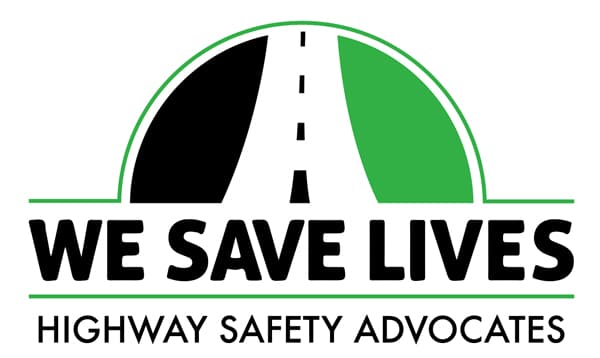
What is an Occupational Therapist?
After experiencing an injury or an illness, life can feel a lot different than it once did. You may have difficulties doing some of the activities that were once important or meaningful for you and you may struggle to fulfill the roles that you had in your life as a partner, parent, friend, or employee etc. When we are not able to do the things that are important to us it can lead to feelings of sadness, guilt, and feeling of being unproductive which can ultimately impact our mood and reduces our quality of life. An occupational therapist’s (OT’s) job is to help you to participate in your daily life in ways that matter to you the most.
An Occupation Therapist will help you to develop the necessary skills to re-engage in the activities that are most meaningful to you. These are referred to Activities of Daily living which can include anything from being able to take a shower or brush your teeth, prepare a meal for your family, attend to your housekeeping tasks, go shopping, take your children to the park, going to work or school, or socializing with friends.
The OT Assessment
An OTs approach to therapy is very different than other healthcare providers in that we are truly holistic in our approach. We look at assessing and treating the entire person, not just a specific component of the person. For example, a physical therapist will work on improving your physical ability and a psychologist will address the mental health condition. An Occupational Therapist will complete a thorough assessment on all the components of the person to find out why a client cannot do what they would like to or need to do. For example, an occupational therapist may assess:
- Your physical abilities like strength, balance, range of motion and coordination
- Your cognitive abilities like memory, attention, organizational skills
- Your emotional abilities like mood, sleep, motivation/initiation and use of coping strategies.
- Your sensory abilities like hearing, vision, sensation
- What materials or devices you use to participate in activities like furniture, utensils, tools or clothes
- What social and emotional support is available to you at home, school, work or in the community, and
- The physical setup of your house, classroom, workplace or other environment
Lets use Ms. Jane Doe as an example. She is a university student who was involved in a motor vehicle accident and sustained significant injures including a fractured pelvis and a complex concussion. She has many post concussive symptoms including headaches, sensitivity to light and sound, poor sleep, difficulties concentrating and remembering things. She has also been struggling with heightened anxiety and lowered mood. She lives with a roommate who is attending school full time and is not always home to support her.
Ms. Jane Doe first met her Occupational Therapist while in the hospital just before she was going to be discharged home. The OT assessed what services she would need directly after being discharged and helped to facilitate these referrals (i.e. physiotherapy, psychology etc.). The OT also assessed what her equipment needs would be to help her safely perform the tasks she needs to do once at home (i.e. wheelchair, bathroom safety equipment, a bedrail to assist with getting in/out of bed etc.). The OT also assessed whether any modifications was needed to make the home more accessible (i.e. installation of a ramp to accommodate a wheelchair etc.). Finally, the OT will conduct an attendant care assessment that is a specific assessment that helps to quantify how much money you may be entitled to by your insurer to hire a personal support worker (PSW) who can help you with your personal care should you require it.
OT Treatment
Once Ms. Jane Doe is discharged home safety, she will continue to meet with her Occupational Therapist to work towards her goal of improving her independence and returning to the life roles and responsibilities that she previously had. As mentioned above, OT treatment addresses all of the components of the person including their environment. The following are some examples of OT treatment that could have been provided to Ms. Jane Doe during her recovery.
- Physical:
- Recommend equipment to improve mobility at home and in the community (i.e. wheelchair/walker/cane), to improve safety (i.e. raised toilet seat, bath seat, grab bars etc.), to improve function (i.e. perching stool to sit on when preparing meals/cooking, long handled reacher to retrieve items from lower levels etc.).
- Provide education on pain management and modalities to assist with pain relief (heating pads, ice packs, TENS machine etc.).
- Develop/implement activity programs to improve endurance/strength.
- Providing education on energy conservation to combat fatigue and teach ways to modify activities that reduce the physical demands.
- Emotional:
- Provide education on relaxation strategies such as mindfulness, meditation, visualization and deep breathing strategies.
- Provide Cognitive Behavioural Therapy (CBT) to change distorted thinking patterns (i.e. negative/catastrophic thinking) and to help reduce anxious/depressive thoughts.
- Development behavioural activation programs to promote initiation of activity when mood is low.
- Provide education on ways to improve sleep.
- Sensory:
- Recommend noise cancelling ear buds to reduce distractibility and noise sensitivity.
- Recommend glare reducing computer screens and/or blue light filters for computer/cell phones
- Recommend sunglasses and black out blinds to reduce light sensitivity
- Cognitive:
- Conduct standardized cognitive assessments to determine where the deficits lie.
- Develop a cognitive rehabilitation program that targets the deficit (i.e. attention, short term memory, planning/organizing). This may include participating in functional activities or “brain exercises”.
- Develop compensatory strategies to (i.e. use of daytimers, writing to do lists, using apps and technology for reminders/scheduling etc.), and teach new ways of learning/studying etc.
- Environment
- Assess need for home modifications/renovations to improve accessibility
- Connect with employers/schools to arrange for accommodations to improve function (i.e. note taking services, special computer technology, additional time for assignments/exams, writing exams in quiet room etc.)
- Arrange for tutoring services if required
- Arrange for specialized transportation
OT’s understand that each person is unique and it is our job to understand each client’s strengths and weaknesses in order to facilitate recovery. You are the expert in “you” and we are here to work with you to best support your goals. Recovery is a journey and we are very honoured to have the opportunity to work along side you, support you and to be your biggest cheerleader!
Submitted by Karen Forse, Occupational Therapist
We welcome Karen as a member of Crash Support Network and we thank her for her support.
This article is also featured in our 2020 Winter Issue of Sharing our Recovery
The Crash Support Network is a unique website consisting of an online support group, a Crash Survivor Blog written by a survivor, our Sharing Our Recovery Newsletter, informative articles and a Virtual Crash Memorial. Our website is based on relationship-building and puts the needs of survivors first by creating a helpful resource for victims and survivors of motor vehicle crashes.






I like that you mentioned how occupational therapists can help you resume the activities that you enjoy. My sister has been looking for an occupational therapist for a few months. Maybe I should help her find a professional that can help her stay healthy.
Hi Derek. My Occupational Therapist has helped me tremendously with my recovery from a horrific motor vehicle crash. I highly recommend Occupational Therapy for your sister’s recovery as well. 🙂